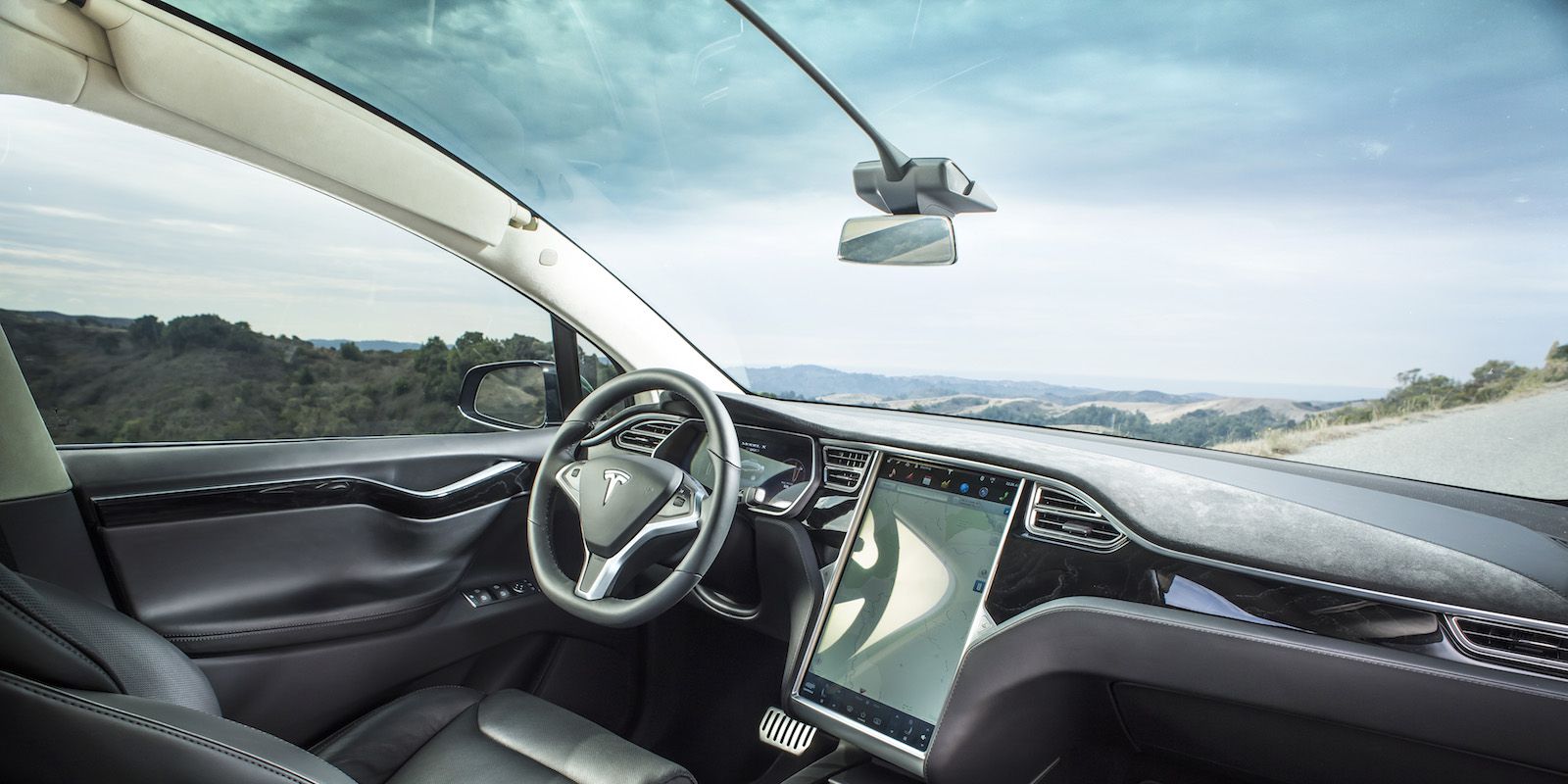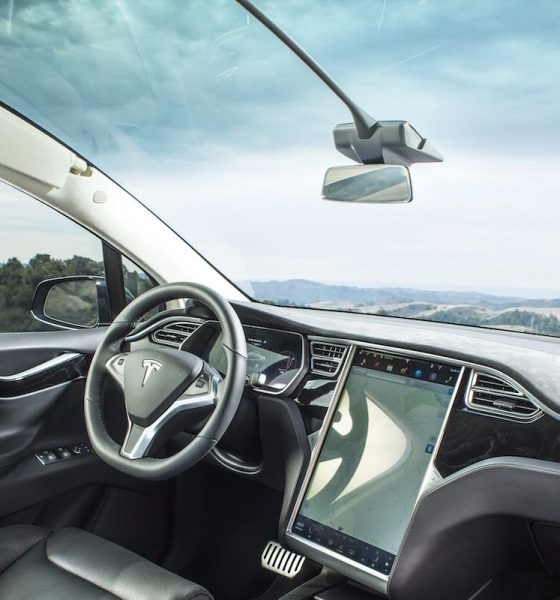

News
Tesla critic gets ‘converted’ after in-depth Model X P100D experience
There is something about the Tesla experience that cannot be replicated unless one gets behind the wheel of one of the company’s electric cars. Once experienced, Teslas tend to convert even the most dedicated fans of fossil-fuel powered vehicles. Detroit veteran and longtime Tesla critic John McElroy recently had that experience, after he was able to borrow a Tesla Model X P100D from a friend over the weekend.
John McElroy does not identify as a Tesla enthusiast. Far from it. Over the years, the auto veteran from Detroit has taken a rather critical stance regarding the electric car maker. Back in 2016, McElroy was among the industry experts who openly criticized Tesla for releasing its Autopilot driver-assist system as a beta feature. In his YouTube channel, Autoline TV, McElroy is also known to point out the flaws of Tesla and its vehicles. Earlier this year alone, McElroy and Sandy Munro pretty much took turns criticizing the build quality of an early-production Model 3.
After extensively experiencing the Model X firsthand, John McElroy is now singing a rather different tune, even admitting that he has “drank the Tesla Kool-Aid and became a believer.” The auto veteran wrote about his experience in a post at Wards Auto, where he outlined his insights as he drove the all-electric SUV for a weekend. McElroy admitted that prior to his weekend with the Model X, he has had limited time with Tesla’s electric cars. He had a brief drive in a Model S some years ago and drove around with Sandy Munro in a Model 3, but apart from that, McElroy has largely evaluated the company’s vehicles from afar.
McElroy noted that the Tesla Model X P100D he used was not a perfect vehicle by any means. It reportedly had buzzes, squeaks, rattles, and its fit and finish left much to be desired. That being said, McElroy noted that in areas that customers “love and care deeply about,” Tesla is around 10 years ahead of the auto industry. The auto veteran outlined the Model X’s convenience features as one of these, such as how the SUV recognizes its driver as it is approached, and how every setting in the vehicle is saved according to its driver’s preference. McElroy also lauded the Model X’s design elements such as its panoramic windshield, which he noted was unlike anything in the industry.
“It’s like watching a high-resolution version of the outside world roll by through a giant IMAX screen,” he wrote.
Being loaned a Model X P100D, it was a bit impossible for McElroy not to take notice of the electric car’s performance. The veteran took a particular liking to the vehicle’s details and little pop culture references as well, which gave the car personality. A free Supercharging session that involved a pleasant experience with Tesla owners rounded up McElroy’s Model X experience. Ultimately, McElroy noted that Tesla’s competitors, particularly those from Germany, would likely be able to match everything that Tesla has accomplished. But regardless of this, it would be difficult for competitors to capture the “fun, whimsical, and sassy attitude” that Tesla has created.
Personal experiences have “converted” other staunch Tesla critics in the past. Earlier this year, Jeremy Clarkson, who was involved in a lawsuit from Elon Musk over the original Roadster’s portrayal in an old episode of Top Gear, drove a Model X P100D in an episode of The Grand Tour. Just like McElroy, it was the vehicle’s performance and whimsical details that ultimately won Clarkson over (Clarkson was particularly fond of Summon and the Model X’s Celebration Mode Easter Egg). The host described the Model X as “serious and lighthearted, sensible and daft,” even going so far as to dub the vehicle as “fabulous.”

News
Tesla starts showing how FSD will change lives in Europe
Local officials tested the system on narrow country roads and were impressed by FSD’s smooth, human-like driving, with some calling the service a game-changer for everyday life in areas that are far from urban centers.

Tesla has launched Europe’s first public shuttle service using Full Self-Driving (Supervised) in the rural Eifelkreis Bitburg-Prüm region of Germany, demonstrating how the technology can restore independence and mobility for people who struggle with limited transport options.
Local officials tested the system on narrow country roads and were impressed by FSD’s smooth, human-like driving, with some calling the service a game-changer for everyday life in areas that are far from urban centers.
Officials see real impact on rural residents
Arzfeld Mayor Johannes Kuhl and District Administrator Andreas Kruppert personally tested the Tesla shuttle service. This allowed them to see just how well FSD navigated winding lanes and rural roads confidently. Kruppert said, “Autonomous driving sounds like science fiction to many, but we simply see here that it works totally well in rural regions too.” Kuhl, for his part, also noted that FSD “feels like a very experienced driver.”
The pilot complements the area’s “Citizen Bus” program, which provides on-demand rides for elderly residents who can no longer drive themselves. Tesla Europe shared a video of a demonstration of the service, highlighting how FSD gives people their freedom back, even in places where public transport is not as prevalent.
What the Ministry for Economic Affairs and Transport says
Rhineland-Palatinate’s Minister Daniela Schmitt supported the project, praising the collaboration that made this “first of its kind in Europe” possible. As per the ministry, the rural rollout for the service shows FSD’s potential beyond major cities, and it delivers tangible benefits like grocery runs, doctor visits, and social connections for isolated residents.
“Reliable and flexible mobility is especially vital in rural areas. With the launch of a shuttle service using self-driving vehicles (FSD supervised) by Tesla in the Eifelkreis Bitburg-Prüm, an innovative pilot project is now getting underway that complements local community bus services. It is the first project of its kind in Europe.
“The result is a real gain for rural mobility: greater accessibility, more flexibility and tangible benefits for everyday life. A strong signal for innovation, cooperation and future-oriented mobility beyond urban centers,” the ministry wrote in a LinkedIn post.
News
Tesla China quietly posts Robotaxi-related job listing
Tesla China is currently seeking a Low Voltage Electrical Engineer to work on circuit board design for the company’s autonomous vehicles.

Tesla has posted a new job listing in Shanghai explicitly tied to its Robotaxi program, fueling speculation that the company is preparing to launch its dedicated autonomous ride-hailing service in China.
As noted in the listing, Tesla China is currently seeking a Low Voltage Electrical Engineer to work on circuit board design for the company’s autonomous vehicles.
Robotaxi-specific role
The listing, which was shared on social media platform X by industry watcher @tslaming, suggested that Tesla China is looking to fill the role urgently. The job listing itself specifically mentions that the person hired for the role will be working on the Low Voltage Hardware team, which would design the circuit boards that would serve as the nervous system of the Robotaxi.
Key tasks for the role, as indicated in the job listing, include collaboration with PCB layout, firmware, mechanical, program management, and validation teams, among other responsibilities. The role is based in Shanghai.
China Robotaxi launch
China represents a massive potential market for robotaxis, with its dense urban centers and supportive policies in select cities. Tesla has limited permission to roll out FSD in the country, though despite this, its vehicles have been hailed as among the best in the market when it comes to autonomous features. So far, at least, it appears that China supports Tesla’s FSD and Robotaxi rollout.
This was hinted at in November, when Tesla brought the Cybercab to the 8th China International Import Expo (CIIE) in Shanghai, marking the first time that the autonomous two-seater was brought to the Asia-Pacific region. The vehicle, despite not having a release date in China, received a significant amount of interest among the event’s attendees.
Elon Musk
Elon Musk and Tesla AI Director share insights after empty driver seat Robotaxi rides
The executives’ unoccupied tests hint at the rapid progress of Tesla’s unsupervised Robotaxi efforts.

Tesla CEO Elon Musk and AI Director Ashok Elluswamy celebrated Christmas Eve by sharing personal experiences with Robotaxi vehicles that had no safety monitor or occupant in the driver’s seat. Musk described the system’s “perfect driving” around Austin, while Elluswamy posted video from the back seat, calling it “an amazing experience.”
The executives’ unoccupied tests hint at the rapid progress of Tesla’s unsupervised Robotaxi efforts.
Elon and Ashok’s firsthand Robotaxi insights
Prior to Musk and the Tesla AI Director’s posts, sightings of unmanned Teslas navigating public roads were widely shared on social media. One such vehicle was spotted in Austin, Texas, which Elon Musk acknowleged by stating that “Testing is underway with no occupants in the car.”
Based on his Christmas Eve post, Musk seemed to have tested an unmanned Tesla himself. “A Tesla with no safety monitor in the car and me sitting in the passenger seat took me all around Austin on Sunday with perfect driving,” Musk wrote in his post.
Elluswamy responded with a 2-minute video showing himself in the rear of an unmanned Tesla. The video featured the vehicle’s empty front seats, as well as its smooth handling through real-world traffic. He captioned his video with the words, “It’s an amazing experience!”
Towards Unsupervised operations
During an xAI Hackathon earlier this month, Elon Musk mentioned that Tesla owed be removing Safety Monitors from its Robotaxis in Austin in just three weeks. “Unsupervised is pretty much solved at this point. So there will be Tesla Robotaxis operating in Austin with no one in them. Not even anyone in the passenger seat in about three weeks,” he said. Musk echoed similar estimates at the 2025 Annual Shareholder Meeting and the Q3 2025 earnings call.
Considering the insights that were posted Musk and Elluswamy, it does appear that Tesla is working hard towards operating its Robotaxis with no safety monitors. This is quite impressive considering that the service was launched just earlier this year.








